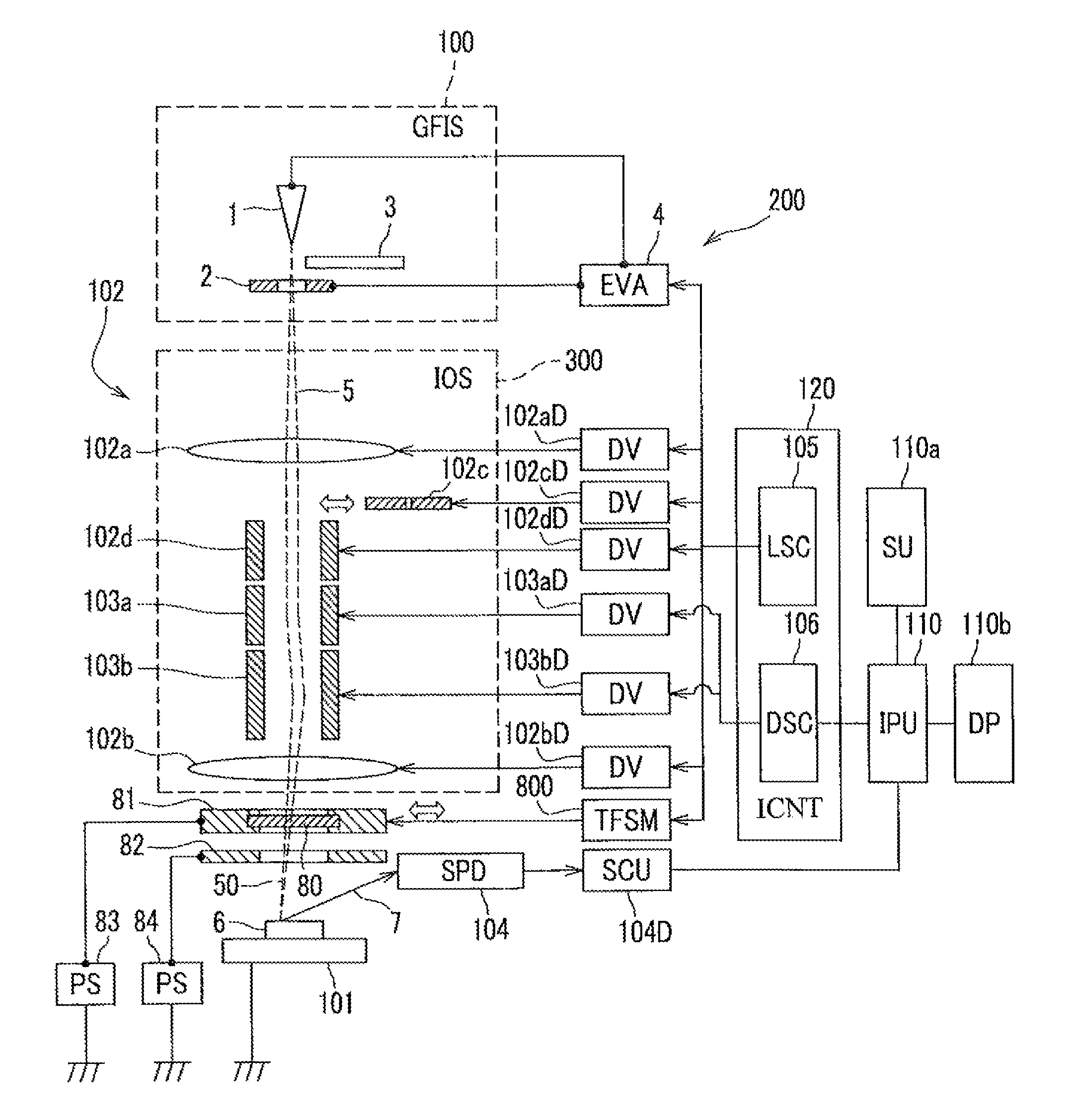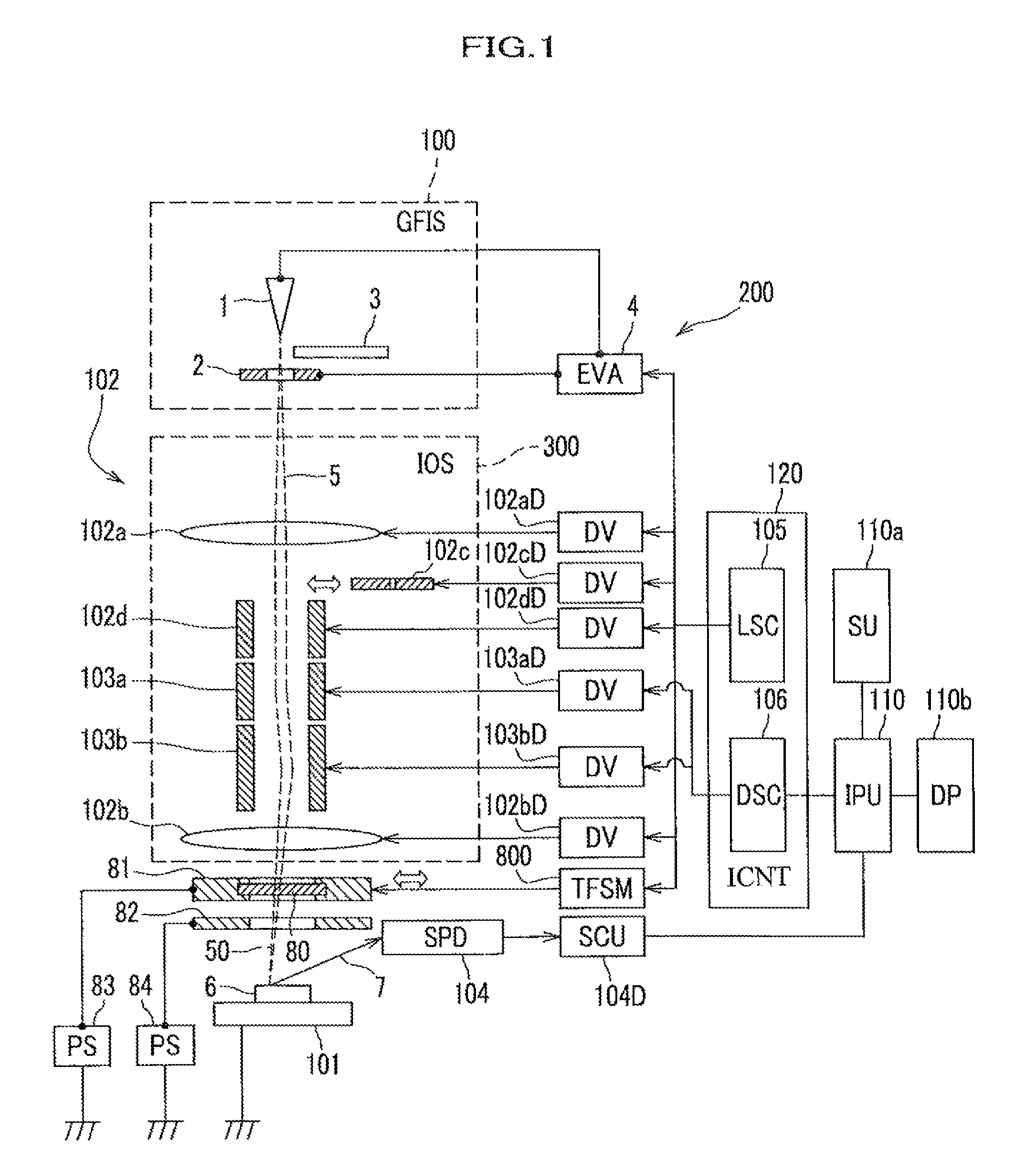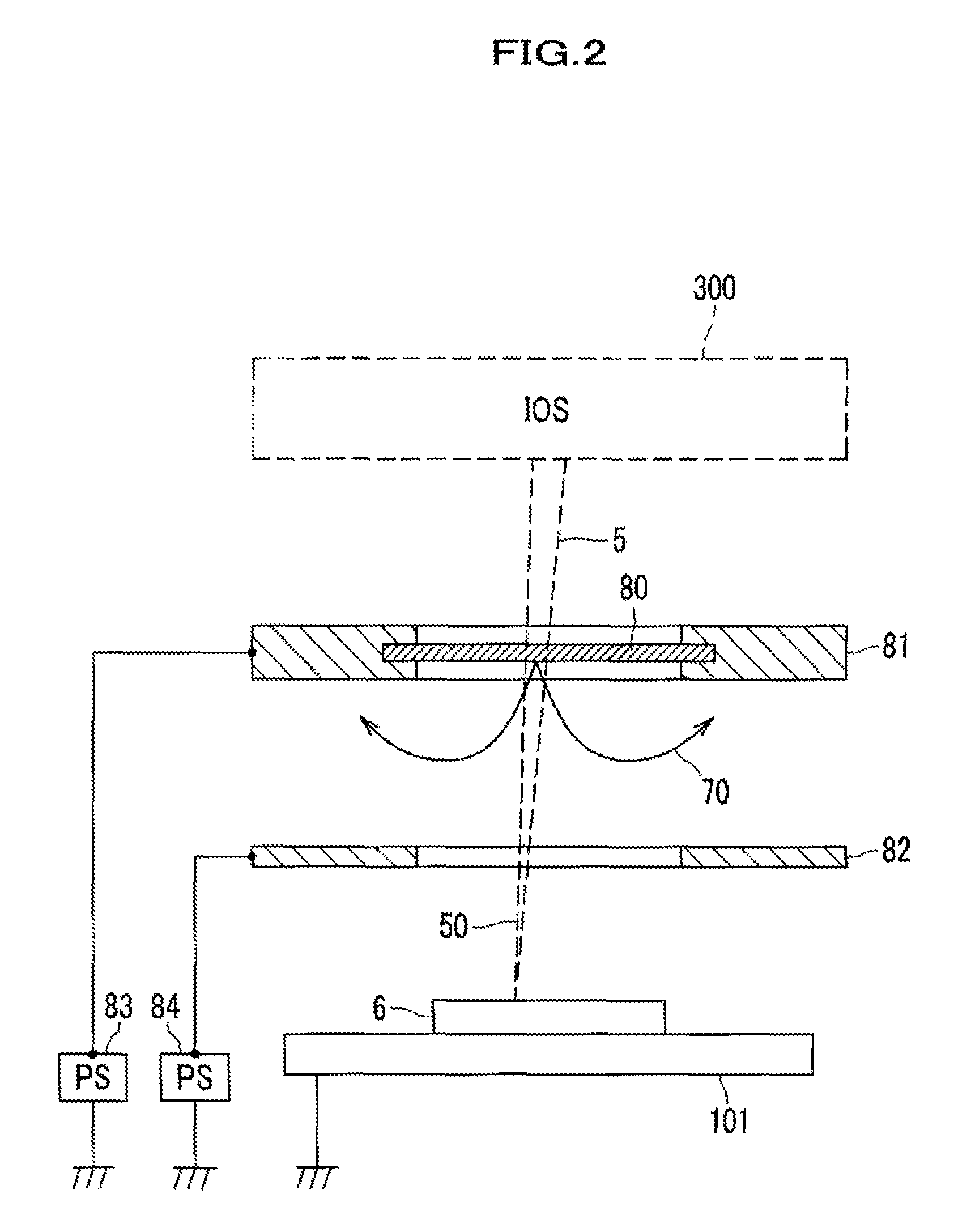Scanning ion microscope and secondary particle control method
a scanning ion microscope and secondary particle technology, applied in the field of scanning ion microscopes, can solve the problems of specimen image distortion with respect to actual image, inability to completely solve the problem of reducing the electrification of the specimen, and inattention to the existence of electric charge or secondary electrons in the transmitted beam, so as to prevent the distortion of the observation image
- Summary
- Abstract
- Description
- Claims
- Application Information
AI Technical Summary
Benefits of technology
Problems solved by technology
Method used
Image
Examples
first embodiment
[0072]FIG. 2 shows a configuration near a thin film of the scanning ion microscope according to the present invention. The periphery of the thin film 80 will be described in detail using FIG. 2. When the thin film 80 is irradiated with the ion beam 5, the secondary electrons 70 transmit through the specimen 6 side of the thin film 80 in addition to the uncharged particle beam 50. When the secondary electrons 70 are mixed with the secondary electrons 7 produced at the specimen 6 and are detected by the secondary particle detector 104 (refer to FIG. 1), noise is mixed in the secondary electron observation image of the specimen 6. Accordingly, in the present embodiment, the electric potential of the electrode 82 having an opening in the center is set by the power source 84 appropriately. That is, the secondary electron 70 is sent back to the thin film 80 side by setting the electric potential of the electrode 82 to minus several tens of V with respect to the electric potential of the s...
second embodiment
[0076]FIG. 3 shows a configuration near a thin film of the scanning ion microscope according to the present invention. The scanning ion microscope in the present embodiment is fundamentally the same as that in FIG. 1 but is different in that there are additional elements near the thin film 80. FIG. 3 shows a peripheral portion of the thin film 80.
[0077]If the thin film 80 is irradiated with the ion beam 5, a small amount of reflection particles and secondary electrons 71 are emitted to the side of the ion optical system 300. When they enter an electrostatic lens or a deflector in the ion optical system 300, the operation of the ion optical system 300 may become unstable as a result of inducement of unnecessary electrification onto the insulator portion. Accordingly, in the present embodiment, a shielding body 85 having an opening is arranged above the thin film 80 for blocking the reflection particles and secondary electrons 71. Although a part of the particles enter into the ion op...
fifth embodiment
[0084]FIG. 6 shows a configuration near a thin film of the scanning ion microscope according to the present invention. The scanning ion microscope in the present embodiment is fundamentally the same as that shown in FIG. 1 but is different in the configuration of the thin film 80. FIG. 6 shows a peripheral portion of the thin film 80. In the present embodiment, a crystalline body 80c is used as the thin film 80. Specifically, the thin film 80 is formed by partially reducing the thickness of a single crystal silicon substrate by etching. In addition, there is provided a thin film inclining mechanism 801 so as to enable change in the incident angle of the ion beam 5 onto the thin film 80.
[0085]Here, there is a channeling phenomenon in the transmission of the ion beam through a crystalline body. That is, the channeling phenomenon is a phenomenon that the transmission capability of an ion beam entering in a specific crystal direction is high. The present embodiment adjusts such that the...
PUM
 Login to View More
Login to View More Abstract
Description
Claims
Application Information
 Login to View More
Login to View More - R&D
- Intellectual Property
- Life Sciences
- Materials
- Tech Scout
- Unparalleled Data Quality
- Higher Quality Content
- 60% Fewer Hallucinations
Browse by: Latest US Patents, China's latest patents, Technical Efficacy Thesaurus, Application Domain, Technology Topic, Popular Technical Reports.
© 2025 PatSnap. All rights reserved.Legal|Privacy policy|Modern Slavery Act Transparency Statement|Sitemap|About US| Contact US: help@patsnap.com



